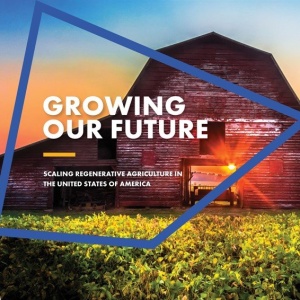
In this report, international non-profit Forum for the Future calls for “a just transition to a regenerative agriculture system” in the United States. The report, funded by the Walmart Foundation, identifies opportunities and barriers to scaling regenerative agriculture in the US.
While noting that the concept of regenerative agriculture remains fragmented and ill-defined, the report refers to regenerative agriculture as “an approach to farming that puts more back into the environment and society than it takes out”. Features that the report associates with the concept include: restoration of ecosystems services; localisation and diversification of production; maximisation of nutrition and public health; resilience; connection between consumers and producers; and equitable distribution of value.
Some of the key barriers identified by the report are:
- Low consumer demand for regenerative food products
- Higher yields and increased efficiency remain the default measures of success
- Farmers need more reliable, trustworthy information on regenerative agriculture
- Supply chain infrastructure has been built around intensive specialised systems
- Farmers struggle to access funding to support the transition to regenerative agriculture
The report notes (on page 22) that regenerative crop and livestock production can have nutritional benefits, such as through producing a greater variety of foods as part of a rotation. However, it does not discuss whether consumers need to change how much animal-sourced food they eat.
See also FCRN coverage of Walmart’s intention to become a regenerative company.
Read the full report, Growing our Future: Scaling Regenerative Agriculture in the United States, here. See also the Foodsource building block What is feed-food competition?, which discusses some aspects of regenerative agriculture, and the FCRN report Grazed and Confused (PDF link).







Post a new comment »